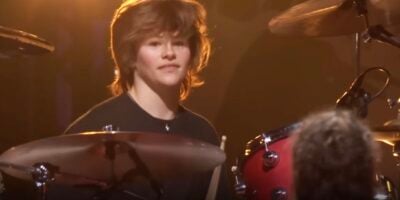We look back at Amy Winehouse: Back to Black, a documentary which captures the brighter sides of the late talent Amy Winehouse, to look at the five facts we found the most interesting from the film.
There have been many documentaries over the years exploring the life and times of iconic singer and songwriter Amy Winehouse, who tragically passed in 2011 due to alcohol poisoning at the age of 27.
However, one has stood out to us as the most revealing into the life of timeless legend Amy Winehouse, and that would be the gripping Netflix doco Amy Winehouse: Back to Black.
The project is a 2018 documentary film about the English singer, and revolves mostly around the making of her second studio album, Back to Black. It contains new interviews, as well as archive footage, and gives us a real peek into the life and times of the artist beyond her musical abilities.
Here are five of the secret facts that we found the most interesting. You can watch the trailer for the doco below.
‘Rehab’ was created on accident
Winehouse’s best-selling smash ‘Rehab’ was birthed while the artist was taking a walk around London town with producer Mark Ronson. Ronson remembers Winehouse randomly singing the hook for ‘Rehab’ on their stroll, including the ever-so-popular “no, no, no” hook.
Love Music?
Get your daily dose of metal, rock, indie, pop, and everything else in between.
Ronson then insisted that they make the song official, and thus it was.
The Dap-Kings appear in the video for ‘Rehab’
In the video for ‘Rehab’, you might notice a band accompanying Winehouse throughout. This band is Sharon Jones’ US soul-funk band The Dap-Kings, who play instrumentals on multiple songs throughout Back to Black, including the titular track itself. Winehouse employed Sharon Jones’ band, to create the sound of her album Back in Black, which ultimately helped the album become as successful as it did.
Neil Sugarman, saxophonist for the band, remembers Winehouse as polite and gracious but also recalls a vivid memory of Winehouse being too high one time to sing a song that they had made especially for her.
Amy wanted no strings on the album
Revealed by Winehouse collaborator Mark Ronson himself, the singer called strings “hammy” and “schlocky”, and did not want them to appear on the album at all.
“I didn’t really do them behind her back, I just thought… let’s add strings behind her back,” he says, laughing. “Maybe she’ll like it. And we mixed ‘Love is a Losing Game,’ which if there were any songs that would raise her alarm bells, it would be that one.
“She was listening to the mix (with strings) for the first time, with her head down on the desk… and then she just turned around, and said, ‘I love it.'”
Winehouse went her own way
By the age of 15, Winehouse had up and left school to begin the pursuit of a full-time music career. The person responsible for teaching her guitar was her brother, (which further cements the previous fact of musicianship being in her blood). Music was always the goal for the artist, with nothing stopping her from reaching her goal.
Eventually, Winehouse signed a deal with Island Records UK in 2002 after years of chasing her dream.
Musicianship runs in the family
Winehouse’s dad, Mitch, was also a musician, this was revealed in the doco. Her dad worked as a cab driver but recorded his own full-length jazz album shortly before his daughter’s untimely passing.
He was even scheduled to perform a big New York show a week after his daughter died but cancelled to return to the UK and grieve.


































